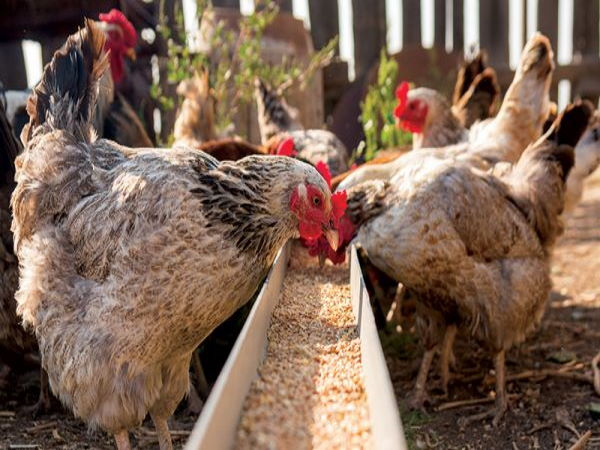+(256) 0707 792064
+(256) 0782 208 208
admin@conversionfeeds.com
conversionfeeds@gmail.com
Coronation Road, Plot 5, Old Kampala

Good Storage of Chicken Feeds: Must Do’s
All types of ingredient, as well as completed compound feeds, require special care during storage to prevent deterioration in quality, and loss. Additionally, they are very valuable commodities and need to be subjected to careful stock control to prevent theft. Here at Conversion Feeds we value the quality of our feeds and take optimum care to provide precision and well farmed feeds for animals.
Stock control is also essential to enable you to fulfill the feed needs of your animals adequately and to ensure that you have enough, but not excess, of each ingredient available for manufacture when needed.
Good storage is essential because the value of the feed that you present to your animals depends on it. Feed spoils during storage -whether it deteriorates quickly or slowly depends partly on its quality when you receive it but very largely on how you store it on your farm.
Feed storage areas must have the following characteristics;
No direct access by birds (or other pets!) – While keeping sealed bins of feed inside the coop is convenient, other equipment that’s not currently being used can quickly pile up next to the feed – making them at risk for collecting droppings and even worse, becoming a home for a feed-loving pest. Store feed separate from your flock and if that’s not feasible, think of ways to contain it all. We like this idea. Securing your feed isn’t just to keep it from your flock or pests. Some types of poultry feed can pose a serious health risk to horses.
Dry and well ventilated – Feed must be protected from moisture. Feed bags should not be stacked directly on the floor as moisture may be absorbed in the bottom bags and the feed may mold in the bag. Any feed storage containers (bins, garbage cans, etc.) should be water and pest resistant. Also, you should completely empty and clean out the feed storage container on a regular basis. If you store feed in bags, make sure old feed is not allowed to accumulate by stacking new feed on top of the old bags.
Well lit – It is important that you can clearly see the condition of any feed you have stored. Once the feed has left a feed mill, it may be exposed to other conditions in storage, so it is wise to be able to see clearly what the feed looks like every time you feed your flock.
Clean – It is important to keep the feed room/storage area free of spilled feed, dust and potential sources of contamination.
Pest free – Feed tends to attract rodents, birds and insects. Spilled feed should be cleaned up. If pest control is required, make sure any pesticides or rodenticides cannot contaminate the feed and that animals cannot access the pest control material.
Here are basics concerning how to store Chicken Feeds;
How much to store depends on the size of your flock. It can be tempting to want to cut down on trips to the Tractor Supply by buying in large amounts, but feed has a shelf life of just a few months. For flocks with fewer than half a dozen birds, purchasing just one bag at a time will reduce risk of spoilage. Transfer feed to a pest-proof container right away and avoid mixing new feed with old to reduce the risk of spreading mold or supporting insect propagation without the feed bin.
Choosing the right storage container is not just a matter of finding a convenient size (although that does make a difference). Store feed in an airtight container that can stand up to clever raccoons as well as the gnawing teeth of squirrels, rats or mice. Metal trash cans with tight-fitting lids work well. Storage bins of heavy plastic will also work, but may eventually be breached by steadfast vermin (it took squirrels about 6 months to finally chew a hole in my last plastic storage container before I made the switch to metal). If using plastic, select opaque containers, as feed will lose vitamins when exposed to sunlight during storage.
Location matters when it comes to storing chicken feed. An indoor spot in a ventilated garage or storage shed will protect feed from spoilage due to heat or moisture and also helps keep hungry wildlife away. Even when stored inside, feed should be stored off the ground on pavers, decking or pallets to avoid condensation issues. When stored outdoors, find a dry, shaded location with protection from the elements.
Keep it clean. Sweep up any spills surrounding stored feed. Once feed loving critters like raccoons, squirrels, opossums on mice know when the goods are stored, they are likely to make your shed or coop-adjacent storage location part of their foragi
